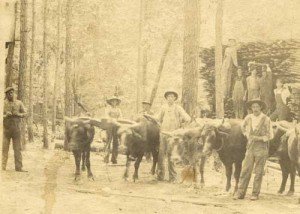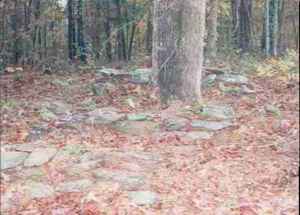It is virtually impossible to discuss The South without the issue of slavery coming up. The usual reaction is to mutter some politically correct response that says we are ashamed of the actions of our ancestors, coupled with the obligatory groveling for some false forgiveness. We will not take that position here, nor will we simply ignore it and pretend it didn’t exist. Also keep in mind that slavery did not start with the Southern states and it did not end in 1865 – the last nation to outlaw slavery was Mauritania in 1981 (no that is not a misprint – it was 1981) and slavery is still practiced in many parts of the world even today.
Some people will make the point that relatively few people owned slaves and that their ancestors certainly did not. I can’t make that statement because mine did. What I can do though, is use what information I have about that situation to try to shed some light on the subject.
First, the basic facts: My great-great grandparents owned at least one slave. He was known as “Uncle Henry”. It was common practice to refer to slaves as “Uncle” or “Aunt”, giving them the status of semi-family. Uncle Henry had a son named Dave Wilson, who continued working for the family long after slavery had ended. Dave Wilson is shown here in this photo on the far left side. The tall man in the center is my grandfather, so this spanned several generations of my family. I think it is a fairly safe assumption that if the family slaves had been poorly treated as popular myth would have us believe, we would not have seen Dave Wilson in this photograph.
Another factor to consider is what happened after the slaves died. If they had been treated and thought of as little more than beasts of burden, wouldn’t they have just been buried in a shallow pit somewhere in the woods? In this second photo are slave graves. They are in the family cemetery near the top of McGehee Mountain in Clay County, Alabama. There is a fence surrounding the cemetery, and the slaves are not buried off in some remote location – they are buried inside the family cemetery right beside the rest of our family. The idea of “separate but equal” really comes into focus here.
Obviously, we cannot say that this is representative of the lives of all slaves, but I have read a number of first-hand accounts – including those of former slaves themselves – who were treated quite well. That doesn’t make it right or good, but it does offer compelling evidence that The South was not filled with sadistic slave masters as the Northern-directed history would have us believe.



This article has me mesmerized, I must share it with FB . . . is that an option on this website?
There isn’t any built-in Facebook code here, but when I want to add something to Facebook, I just copy the URL and paste it into the “What’s on your mind?” box. That seems to work pretty well.
Very well said, Stephen, and interesting to boot. Southern slavery is a favorite whipping boy (double entendre intended) of many outspoken Americans, yet these same people often don’t cry out against modern slavery of all stripes, not the least of which is our modern human trafficking right here in the United States today.
Another thing I forgot to point out – Until not too many years ago, the graves of my ancestors were marked with little more than what you see for the slave graves. The granite headstones were added later.
You instinct is correct, good sir, and there is plenty of documentary evidence that supports your view. The fact is, slavery was not that bad for the slave, and positive feelings generaly existed between the slaves and the slave owners. We have inherited the abolitionists’ false view of slavery.
I recently wrote a short essay about this:
http://religionnewsblog.blogspot.com/2010/09/truth-about-slavery-in-us-it-wasnt-that.html
Excellent article, sir. A Southside View of Slavery is on my bookshelf in front of me. I was first introduced to that book in a series of sermons preached by my pastor on the Book of Philemon titled “What The Bible Says About Slavery”. If you click on the “Resources” link, you’ll see links to mp3 files for those three sermons. There is plenty of good information there, including reference to my step-grandfather’s Indentured Servant contract. I’ll try to post an article on that document soon.
Thank you for stopping by – and for the link to your essay.
Thank you, I will be adding you to my link list. You might enjoy my essay posted today, concerning Reconstruction.
Excellent essay on Reconstruction, sir! For the benefit of others – here is the link: http://religionnewsblog.blogspot.com/2011/02/truth-about-reconstruction-our-template.html
Fascinating article. I too have visited many cemeteries in the South where slaves were buried next to their masters. One that comes immediately to mind is the Crawfordville, Cemetery in Taliaferro County, Georgia. It adjoins the Liberty Hall, the home of Alexander H. Stephens, Vice President of the Confederacy. Stephens donated the land for the cemetery, which is still active.